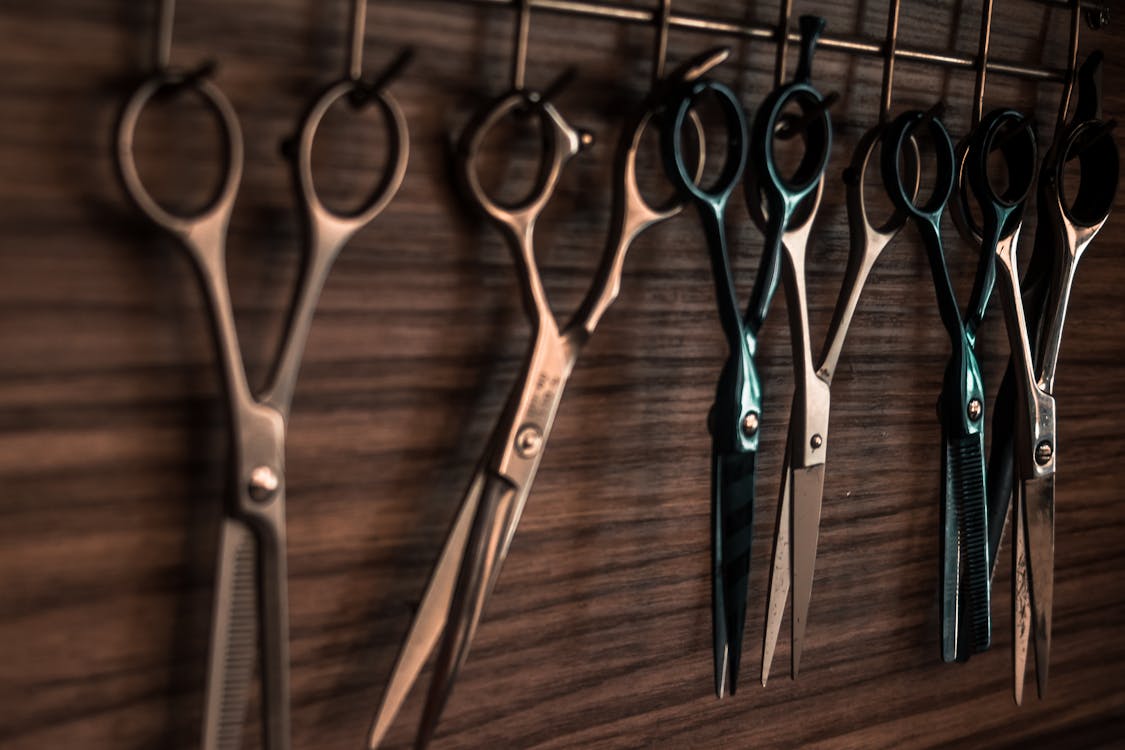Scissor sharpening near me for Groomers
Scissor sharpening near me for Vets
As a professional chef, you know that having sharp knives is essential. It not only ensures the efficiency of your work and precise, but it also helps prevent potential injuries. This is where honing steel comes in. Honing steel is an important tool for any serious chef or butcher, but What exactly exactly do you mean by it? And why is it vital to your knife proficiency? In this article, we'll look at these and other questions while we talk about the advantages of honing steel and how to properly use it.
What is honing?
Honing steel (also known as sharpening iron) is a long , slender metal rod, with a sharp edge that can be used to sharpen and preserve the edge of blades of knives. It is comprised of two components: the rod itself and the handle, which houses an ergonomic grip that allows for effortless handling. The rod's body has lines that extend lengthwise across its body; these ridges form an edge when the knife passes across them. If honing steel is done properly, it gives an ultra-sharp edge for a knife blade that can last for longer than were to employ electric sharpeners or whetstones all on their own (1).
What are the benefits of using honing steel?
One of the main advantages of honing steel is that it helps prolong the life for your knife. By regularly running your blades across the ridges of your honing iron, you'll keep them sharper over longer periods of time , by realigning any edges that are dull or jagged as time passes (2). This will save you time and cash in the end and you won't have to purchase new blades every time! Furthermore, since honing iron isn't as sharp as other tools like whetstones, or grinders, it's not likely to damage or wear down the blades as time passes (3).
Another benefit of using honing steel is the safety aspect: when used correctly it will help prevent accidental cuts from dull blades, by creating sharp, razor-sharp edges each time you use the tool (4). When cutting through hard materials dull blades could result in nicks or slips. Using honing steels regularly will keep blades sharp and decrease the chance of injury by a large amount.
How do I use my honing tool correctly?
Using honing steels correctly requires patience and precision. Here are a few easy steps to begin:
- 1) Begin by holding your knife perpendicularly to the rod not against it. It should be at around a 20-degree angle (5).
- 2.) 2. Move the blade gently across one side of the rod at steady intervals until you reach the point; repeat this motion on the opposite side, using light tension throughout every motion (6).
- 3) Be sure to maintain an even angle during every stroke. A slight angle could lead to an ineffective edge, and excessive angle can result in damage to your blade (7).
- 4.) Once both sides are completed evenly, slowly move up towards its foundation until both sides have been taken care of before repeating the strokes from base to tip many times, based on the sharpness you wish your blade's edge to be
- 5) Then, you can finish by wiping out any metal shavings using a damp cloth before placing them in a storage container to use in the future!
Conclusion
To summarize that, honing stainless steels are indispensable tools for any serious fan looking for a precise edge on their knives, without creating unnecessary wear and tear due to sharpeners that are abrasive, such as whetstones and electric sharpeners. They'll not only reduce your costs over time by extending the life of your blade, but they also create a sharper and safer cutting experience each time you use them! Be sure to take care when using them and always practice patience and precision with every cut. Good luck!
Sharpening Serated Knives
The serrated knives can be used to accomplish a range of tasks that range from cutting vegetables to cutting through meats that are tough. However, if the serrations on your knife get dull, it's time to sharpen them. For that, you need a diamond sharpening steel. A diamond sharpening steel is an invaluable device for any professional or home cook. It allows you to quickly and accurately sharpen serrated knives but also straight-edge knives as well as scissors.
The most effective method to sharpen your serrated knife is by using diamond cutting edge stones. This kind of stone is made from diamonds, and is extremely durable. The harder the stoneis, the sharper its blade. Diamonds can cut through any kind of material quickly. They are used to make jewelry , and are very expensive.
However, there are many options to sharpen your sharp knife, without spending several thousand dollars. It is possible to use a common filet knife, a bench grinder, perhaps even sandpaper.
There are various kinds of stones you can buy at your local hardware stores. Some people like to use the emery paper, which is slightly less expensive than a diamond stone. But, if you wish to see the most impressive results, you must opt for a diamond stone.
What is a diamond for sharpening steel?
A diamond sharpening steel (also known as a honing rod) is an essential instrument to keep your kitchen knives in tip-top shape. It has a diamond abrasive surface that makes it ideal for sharpening straight-edge blades and serrated edges. The diamond's fine grit surface helps remove burrs and scratches from the edge of the blade while also rearranging the metal fibers so that they meet perfectly when reattaching the edge of the blade. This makes sure that the knife will keep its sharp edge longer than the other sharpening rods or stones.
Using diamond Sharpening Steel , you can Sharpen serrated knives
Sharpening serrated knives involves specific techniques that are different from those used for straight-edged blades. Before using your diamond sharpening tool ensure that you study the manual of the product carefully, as directions may vary according to the kind of rod you have purchased.
- Step 1: First, apply a soft cloth to clean off any food particles or debris from the blade. After that, you'll use your diamond sharpening steel to improve the sharpness of the blade.
Step 2: Hold the handle of your diamond sharpening tool firmly in one hand, while holding the serrated blade of your knife against its lengthwise face at an angle between 20deg and 30deg relative to its lengthwise face (as shown in the figure 1). - Step 3: Gently slide the knife along its lengthwise edge in alternating forward and backward movements until all of its serrations have been brushed on it several times (as as shown in Figure 2.). Don't push too hard or move too fast, as this could result in damage to your knife's edge and surface of the rod that you are honing!
- Step 4: Once all of your knife's serrations have been brushed on it repeatedly, repeat Step 3 with each serration until you have the desired results (as shown on Figure 3).
- Step 5: To top it up, offer each serration a final smoothing stroke using moderate pressure. Clean off any remaining residue with a soft cloth prior to putting them in a safe place!
Conclusion
Sharpening serrated knives can be difficult if you don't know what you're doing; however when you use the correct techniques and proper care you can maintain these tools using just a few strokes of a high-quality honing rod, such as diamond sharpening steel! Follow these steps whenever you need to touch up or alter the shape of your knife's edges. You'll be happy you made the effort!
More info:
Zdravje in Dom Kombuča shears sharpening knife cutting tools

